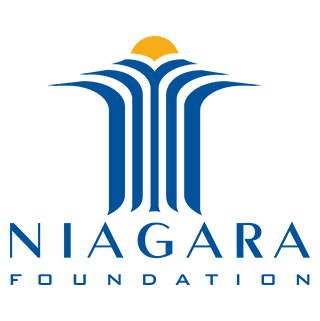By: Megan Deppen, intern at Niagara and student at DePaul University
Joining Niagara as a guest blogger is the esteemed Martin E. Marty. Professor Emeritus at the University of Chicago, Marty is the recipient of numerous prestigious honors and was the president of the American Academy of Religion, the American Society of Church History, and the American Catholic Historical Association.
Marty is an elected member of the American Antiquarian Society and of the American Philosophical Society and is the Mohandas M. K. Gandhi Fellow of the American Academy of Political and Social Sciences.
In his posts, Marty will instigate peaceful dialogue about the relationships between peoples of deeply held faiths, and how they can live together to serve common society.
“A lot of people think that the way to get along in pluralism is by being tolerant, which means not caring a lot about anything,” Marty said. “My experience with Niagara Foundation is just the opposite.”
“If you have a true confrontation, if you list out the elements of what makes [your faith] important to you, you’re more likely to understand the other and deal better with them. And that’s one of the things that Niagara does, by honoring people of various faiths, putting them on a platform, in an audience that is purely interfaith.”
Professor Marty’s interreligious work began in the 1950s when religious diversity was equated with the intersection of Protestantism, Catholicism, and Judaism. In 1987, Marty was asked by the American Academy of Arts and Sciences to co-direct the Fundamentalism Project, an investigation of the world’s most militant religions. After six years, Marty and R. Scott Appleby finally published the five-volume work. Upon completion of the project however, Marty felt driven not just to catalogue these militant traditions, but to investigate what sorts of interfaith groups were working with them and helping them coexist with other religions.
Marty found that one of the most vivid places for religions to intersect in productive dialogue was here at the Niagara Foundation. Marty’s relationship with Niagara grew from common interests and friendship, and developed to where Marty became a frequent speaker at Niagara events.
“I see it as one of the one or two most lively interreligious events in Chicago. I think [the Niagara Foundation] does a marvelous task of representing what interfaith is and also making a face of Islam to the larger culture that we might miss otherwise,” Marty said.
Marty’s experience with militarist fundamentalism revealed the power religion has in overcoming social and political differences. He encountered people with whom he could communicate simply because he respected and understood their religion.
“We found that in [conducting the fundamentalism project] we really could communicate with all but the very most militant people. They knew that we respected what they were about, and carried on from there,” Marty said.
Throughout the project, Marty said he and R. Scott Appleby visited and revisited a Spinozian quote that speaks for much of what interfaith dialogue is about: “When I set out to understand complex human action, I’ve made a deciduous effort not to laugh, not to cry, not to denounce, but to understand.”
Marty is currently editing a book on the Hizmet movement and Niagara’s Honorary President, Fethulah Gulen. The book illustrates the many dimensions of Gulen, his movement, his predecessors, and seeks to demonstrate not only the literal meaning of “hizmet,” which is “service,” but also the value of serving without personal reward.
Marty found that describing the Gulen Movement as “moderate Islam” gave the impression that followers would lack conviction, or in Marty’s terms, be “wishy-washy.”
“And that’s not what the Gulen people are about,” Marty said. “They are very deeply committed [to their faith], but they’re also very deeply committed to interfaith.”
A Chicago resident, Marty is well versed in the local issues of interfaith and peacebuilding. Addressing issues of interfaith in Chicago means overcoming the isolation of suburbanization. As more and more people move away from the city, cultural groups become dispersed and don’t encounter each other. The greatest challenge, Marty said, is bringing these groups together to discuss both the tensions and opportunities within their faiths and the traditions that surround them.
Stay connected to our blog to engage in these conversations with Martin E. Marty and our other guest bloggers.
